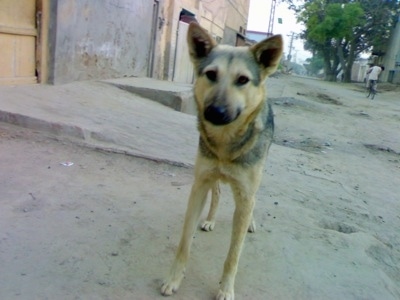
Local name: Bhaghyar (Urdu)
Discription and Biology:
Description: The largest wild canid. Fur is thick and usually grey, but can vary from nearly pure white, red, or brown to black. Head-and-body length: 100- 150 cm. Tail length: 31-51 cm. Shoulder height: 66-81 cm. Weight: 16-60 kg, males heavier than females.Reproduction: Time of mating: January-April. Gestation: 6 1 63 days. Litter size: 1-1 1, mean 6. Duration of lactation: 8-10 weeks. Age at sexual maturity: 22-46 months, occasionally 10 months. Longevity: up to 13 years in the wild, 16 years in captivity.
Social Behavior: A pack-living animal with a complex social organization. Packs are primarily family groups. The dominant pair breeds, with sub-dominant females under behaviourally induced reproductive suppression. Packs include up to 30 individuals, but smaller sizes (8-12) are more common.
Diet: Extremely variable, but the majority of the diet is large ungulates. Grey wolves will also eat smaller prey items, livestock, carrion, and garbage (all above information from Iucn’s Canid Specialist Group).
Habitat and Distribution:
There are two subspecies of the Grey Wolf in Pakistan. In the northern mountanious regions, the Tibetan Wolf (Canis Lupus Campestris) is found. The Tibetan Wolf inhabits the barren rocky mountanious valleys of Baltistan, Gilgit, Hunza, Chitral, Upper Swat and Khunjerab National Park. In the south of the country the Indian Wolf (Canis Lupus Pallipes) is found. Here the wolf inhabits the deserts of Cholistan and Thar. Further West the wolf inhabits the lower hills of the Baluchistan pleatue where it is widespread. The wolf is also found in N.W.F.P, but it is rare in this region.The wolf has declined greatly in numbers during the last few decades. Local people kill the wolf because it is considered destructive to livestock. The wolf may became extinct in the east of the country if hunting is not stopped and it is not protected. Its survival in Baluchistan and the northern areas is slightly better. There is no information about the exact number of wolves in Pakistan.
